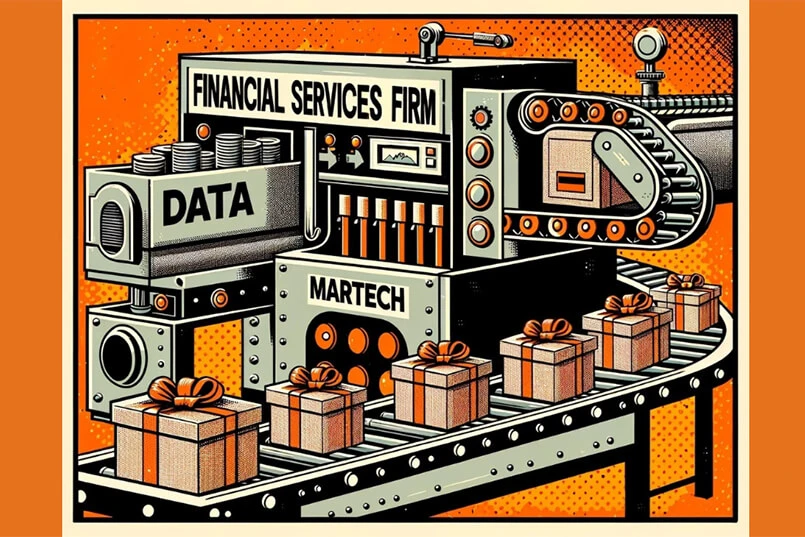What is a composite pitch?
You are probably familiar with a creative agency pitch. Or a media agency pitch. Or a digital agency pitch. Or a PR Pitch. Or an experiential agency pitch. But what is the process when you need to select an agency that can provide all of your needs? The industry talks about full service agencies, but it is increasingly difficult to find either a single agency that can deliver a complete range of services or a composite of agencies that will work together to provide these services.
This is also why agency networks and agency holding companies (and who knows, soon consulting firms?) will often create a composite of services customised to the advertisers specific needs. This is why we call this a composite pitch. It provides the ability to test a composite combination of agencies against each other – best of breed, lead agency, holding company solution or a combination or hybrid of several of these. This is the valuable alternative to running a succession of tenders or pitches and trying to piece together the right combination or solution.
Here are three case studies of composite pitches we have designed, managed and delivered recently.
Case Study 1
Financial Services – Holding Company Solution
Challenging Problem: The company had embraced an agile approach to become more customer centric and responsive. There was a belief within the marketing team that this required a more streamlined roster of agencies. There was also a desire to take the whole roster to pitch with a succession of tenders that would have taken more than 12 months. Because of the logistics of this and the unacceptable time frame, some in the marketing team were considering a proposal from one or more of the agency groups and their holding company.
Creative Solution: Rather than a succession of tenders or simply appointing a customised solution proposed by the holding company, we recommended a composite tender process where the client could test combinations of best of breed agencies, lead agency options and one or more of the solutions on offer against each other. More importantly each option was tested against the ideally successful outcome.
Process: The process commences with a detailed mapping and understanding of the current roster and the agency capabilities and then defines a successful future state that would meet the needs of the marketing team and deliver the strategy and the range of capabilities. We then develop a brief for the various combinations and commence preparing a list of potential agencies and holding companies and other vendors to meet the various part of the future state. This includes considering any and all options already being considered by the client.
Having checked the capabilities of the agencies and the chemistry of each option with the client team we work to shortlist to three viable options. It is at this point that the strategic workshop process we use for the pitches we run becomes invaluable in testing the various combinations against each other.
Best of breed – This is where we have placed combinations of high performing agencies into a single composite solution.
Lead Agency – This is where an agency that meets the majority of capability requirements co-ops other suppliers into providing a total solution.
Holding Company – This is where a holding company either recommends a customised or composite team providing a total solution.
Alongside the workshop process we also have each of the three complete a comprehensive agency resource and financial proposal based on the proposed scope of work. It is the combination of the performance in the strategic workshops and the proposed cost that informs the decision on the best value solution.
Results and feedback: In this particular case the holding company had been promising that their composite solution would be significantly lower than a best of breed model of what the client currently had in place. The reality was the proposed holding company fee was significantly higher at almost 20% above the benchmark and the other options ironically were below the benchmark. Our concern was that these other proposals were unlikely to be sustainable, but likewise the holding company had allowed significant layers of management within the proposed solution that would have worked against the agile approach the client was wanting to achieve.
The holding company also outperformed the other solutions in the strategic workshop and was therefore the best option. It was then a matter of negotiating not just the resources and costs but the proposed structure and process against the scope of work.
Case Study 2
Automotive – Lead Agency Solution
Challenging Problem: The company was moving from a traditional advertising strategy to having marketing manage the customer journey to the dealers and then assist in managing the customer value of that customer. This required a significant shift, not just internally but also in the agencies that they had partnered with for many years. There was also a desire to refresh some of the agency relationships and also test others against the market as the client had not gone to market with the current roster for more than a decade.
Creative Solution: Rather than go to market with a pitch for the main agencies, we discussed mapping a future structure with the client based on their strategic requirements, and then populated this with the incumbent agencies. The result identified a range of services and agencies to go to market. Rather than taking each of the agency categories to market individually we designed a composite pitch that would allow the client to test those agencies they wanted tested and provide them with the opportunity to test new agencies and new combinations of agencies.
Process: The first step was to map the current agency roster and identify the capability gaps. Then we mapped the agencies against those that fitted the capability requirements and those agencies the client rated and those they believed needed to be tested against the market. There were two significant gaps being data analytics and insights and CRM / loyalty marketing. The client also did not want to put the media agency to market as this was a long-standing and high performing relationship.
We developed a composite pitch process and invited the three main agencies on the roster, excluding the media agency, to develop a lead-agency proposal as part of the tender. Each agency bought a proposed solution to the table (excluding media) and participated in the strategy workshops to test the ability of the lead agency (and their partners) to develop and deliver the desired outcome.
As the media agency was exempt, they participated in each of the three workshops with each of the lead agency groups. All three were also asked to complete a comprehensive resource and financial proposal against a supplied scope of work.
Results and feedback: Interestingly it was not the main creative agency that put the best lead agency combination together. In fact the successful lead agency bought a combination of capabilities required and proved their ability to work together, work with the marketing team and work with the incumbent media agency.
One of the factors that worked against the incumbent creative agency was that they behaved as if the account was already won. It could be they thought they had the same pass as the media agency. This was expressed as being they led and the other agencies they were partnering with (many within their own holding Company) followed. Also the focus on their solution was very advertising-led, while the winning lead agency presented a more channel-neutral solution.
Case Study 3
Financial Services – Best Of Breed Solution
Challenging Problem: The company appointed a new CMO to implement a strategic shift to broaden the customer base. A review of the main incumbent agencies left the new CMO feeling that the creative and the media agency were not up to the task, a position supported by the business right up to the CEO. (It appears the last CMO was unwilling to make the changes required either internally or externally.) One of the core areas of concern was the digital channels, which were believed to be significantly underperforming from a media and creative perspective.
Creative Solution: We were contacted and asked how quickly we could help them run a tender to select a new media agency, new creative agency and a new digital agency. They were willing to run the three tenders concurrently. Instead we recommended a composite pitch with the three streams coming together in the strategic workshop to test how collaboratively each of the agencies worked together.
Process: We managed the process to select the best of breed agencies for each of the disciplines and capabilities required. Capabilities were tested by an RFI of a selection of suitable agencies and then we tested culture and chemistry by meeting with each of the short listed agencies. From this process the client selected three agencies of each type, 3 creative, 3 media and 3 digital agencies. Working with the client and the shortlisted agencies we then combined these agencies into teams for the strategic workshop.
Each agency was asked to prepare their own proposal for the resourcing and the agency fee model and this was benchmarked against the scope of work provided. Also there were additional meetings with the shortlisted media agencies to review their planning and buying processes. Following the workshops the client chose the agencies they preferred from the process and then considered how they would work together. This process was informed not only by the workshop outcomes but also the way the agencies worked together and worked with the marketing team during the workshop.
Results and feedback: While many thought the agencies would be selected based on how they were combined into the workshops, the fact is that the client ended up selecting two agencies (creative and media) and one agency (digital) from one of the other workshop groups. The selection was based on balancing demonstrated capability with demonstrated collaboration.
The result was a new purpose-selected roster of agencies across the three disciplines but also a roster that would work collaboratively together and with the marketing team.
TrinityP3’s comprehensive Search and Selection process provides extensive market knowledge, tightly defined process and detailed evaluation and assessment. Learn more here






